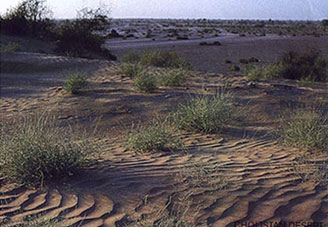

Lal Sohanra

Like the Changa Manga forest, Lal Sohanra is yet another planted forest by the British for their locomotive needs during their occupation of the Indian sub-continent. Lal Sohanra is spread over 153,000 acres and a unique park in the world in the sense that it has three factors - desert, forest and water. The Park is situated some 35 kilometres east of Bahawalpur and presents a sweet synthesis of forest and desert life. This park was established on both sides of desert branch canal. The park is spread over an area of 127,480 acres (51,368 hectares) - out of which 20,974 acres (8,491 hectares) are green land reserved for irrigation plantation, 101,726 acres (40,942 hectares) are dry land (desert) and 4,780 acres (1,935 hectares) are wet land (ponds, lakes). The land is generally flat, interspersed with sand dunes with the size of 1-40 hectares and 1-6 meters in height. Dunes of 1000 hectares are also found.
Different types of animals and birds are found in plenty besides wild animals of the desert like wild cat (black), black rabbits, black bustards, deer of different types, Ghazaal, etc. More than 160 species of birds include Birds in the park are--Houbara bustard, Griffon vulture, Honey buzzard, Marsh harrier, Hen harrier, Laggar falcon, Peregrine falcon, Kestrel, Indian sparrow hawk, Egyptian vulture, Larks, Shrikes, Wheatears and Barn Owl. Reptiles in the park include Monitor lizard, Russell's viper, Indian cobra, Saw scaled viper, Wolf snake, John's sand boa and Spiny tailed lizard. There is big lake in the center of the park called Patisar Lake, which is ideal for bird watching. Patisar Lake regularly holds between 10,000 and 30,000 ducks and common coot in mid-winter. Arrangements are afoot to convert the Lal Sohanra National Park into a wildlife safari park of international standard by the Punjab government.
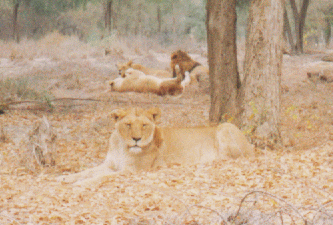
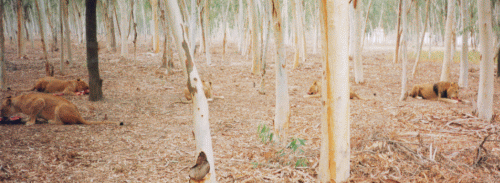
The best attraction is the lion safari to see the lions in their natural habitat from close quarters. One lion with four lionesses roam freely and one can go as close as the photograph above. But one is not advisable to get out of the vehicle since these lions are wild and can devour on anything live and close. There is even a pair of Rhino's which were gifted from Nepal in the captive breeding suite. Rhino's were once found as far west as the Peshawar Valley in the Mughal Emperor Babur's day but now are extinct in Pakistan and western India.
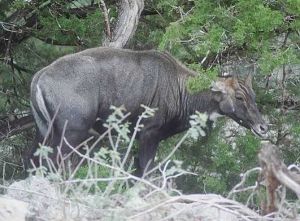
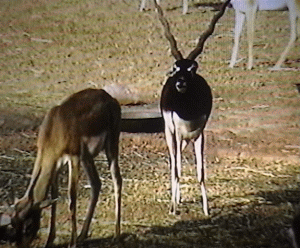
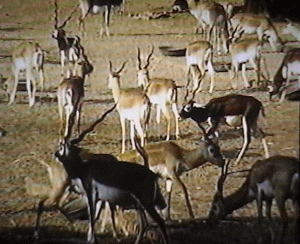
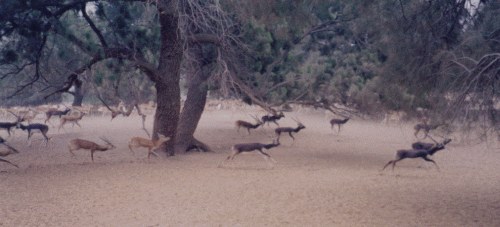
Another significant feature of the park is the enclosure of black bucks. Over 413 animals are being currently bred in the Lal Sohanra Park. More blackbucks are provided to the eminent conservationists from time to time for further conservation in Lal Sohanra’s private reserve. The unique feature of the blackbuck is that it is one of the few antelopes that exhibit pronounced sexual dimorphism.
|
About Black Bucks: The gender of the animal is clearly distinguishable. Both sexes have white underpants, including the insides of the legs and lower chest, as well as a white ring surrounding the eye and a white chin. The weight of the blackbuck is somewhere between 25-35 kilogrammes. Females and the young have yellowish-fawn patches on their backs and heads and are generally hornless. The colouring of the males gradually darkens with age, from tan to deep brown or black. Their build is slender and their tails are shorter. Only the males have horns, which sprout before their pronounced colour change. The horns are twisted in a tight spiral with up to five turns. They may grow up to 35-73 cm or 14-29 inches. One of the fastest moving land mammals, the blackbuck runs at a speed of 80 kmph. During the breeding season, males become territorial for two weeks to eight months. They defend an area ranging between one and 17 hectares from rival males and keep the largest group of females possible within their guarded area. These guarded locations hold mixed herds of 5-50 animals with three or fewer males. Dominance of the males within a herd is achieved through threatening gestures. |
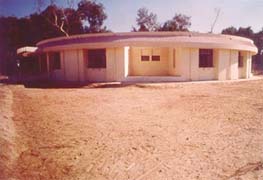 The TDCP motel and restaurant at Lal
Sohanra Park
and Game Reserve is spread over 10 acres near Bahawalpur. The air-conditioned
6-bedroom motel is set in idyllic surroundings and has its own restaurant, snack
bar and swimming pool. The nearby lake offers excellent boating and fishing
facilities. This area is best for eco-tourism and is called the gateway to
Cholistan Desert. The park has always been a source of attraction for the
foreign tourists, visitors and even the former and present rulers. The best
season to visit this park is from September to April. Forest Department,
Bahawalpur also arranges sight
seeing tour of the national park from its office located at 3-A. Trust Colony,
Bahawalpur every day in the morning at 9.00 a.m. Other facilities such as
camping, game watching from the towers, bird watching and Rest House facilities
are available in this park. The rest houses may be booked through the office of
the Forest Department on the aforementioned address.
The TDCP motel and restaurant at Lal
Sohanra Park
and Game Reserve is spread over 10 acres near Bahawalpur. The air-conditioned
6-bedroom motel is set in idyllic surroundings and has its own restaurant, snack
bar and swimming pool. The nearby lake offers excellent boating and fishing
facilities. This area is best for eco-tourism and is called the gateway to
Cholistan Desert. The park has always been a source of attraction for the
foreign tourists, visitors and even the former and present rulers. The best
season to visit this park is from September to April. Forest Department,
Bahawalpur also arranges sight
seeing tour of the national park from its office located at 3-A. Trust Colony,
Bahawalpur every day in the morning at 9.00 a.m. Other facilities such as
camping, game watching from the towers, bird watching and Rest House facilities
are available in this park. The rest houses may be booked through the office of
the Forest Department on the aforementioned address.
Related Links: |
Lal Sohanra National Park |
Status of Flora in Lal Sohanra |
|
| HOME PAGE | MORE ABOUT OUR LAND | Copyright©JalalsPages - 2007 |